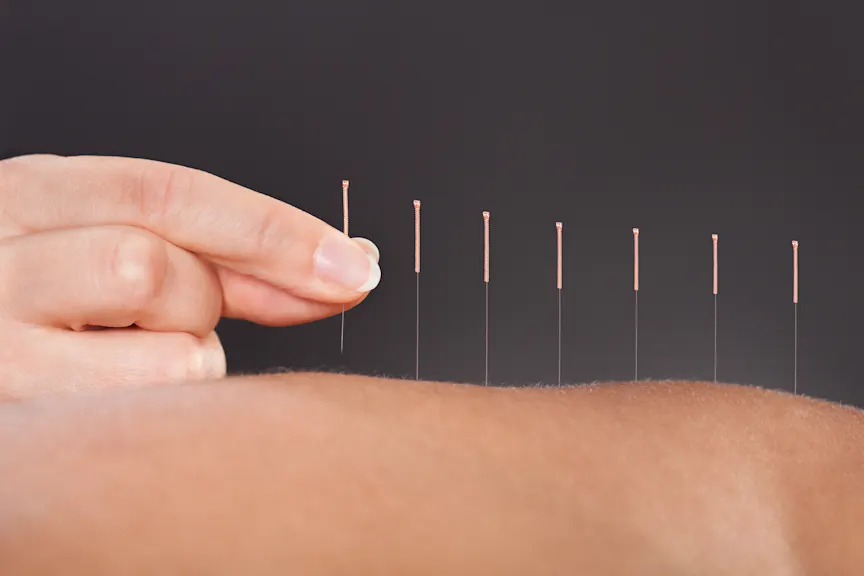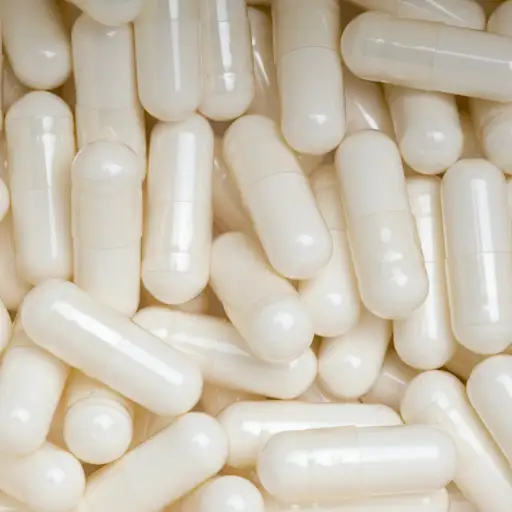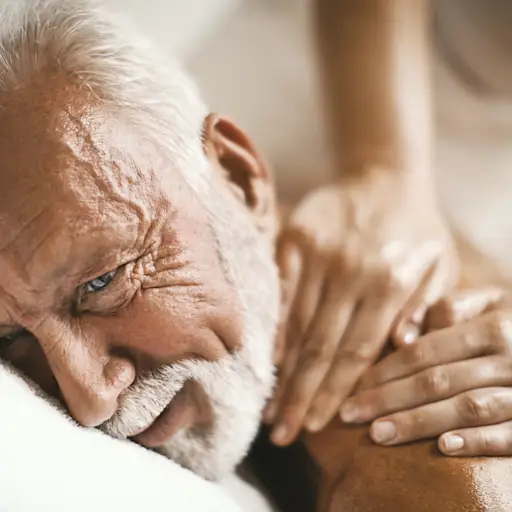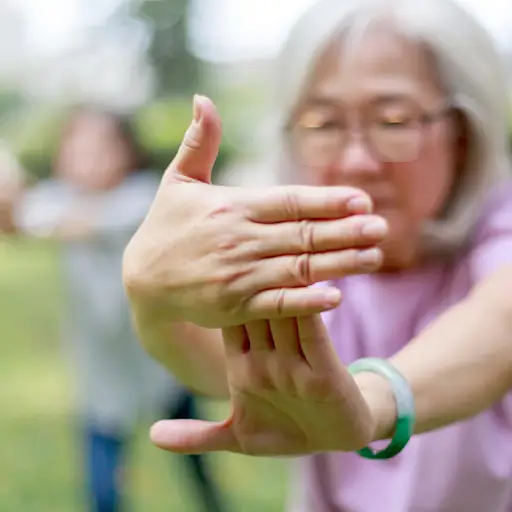Best and Worst Natural Remedies for Osteoarthritis

When you’re livingwith osteoarthritis (OA) pain that can’t be managed with conventional treatments alone, you may consider complementary therapies, too. “Traditional medicine is important,” says Deborah Ballard, M.D., a physician at Duke Integrative Medicine in Durham, NC. But it’s only one tool in the toolbox. Your best bet is to visit an integrative clinic, where you can get a customized healing plan, Dr. Ballard suggests. And whatever you decide to try—even if it’s an OTC supplement—always (always!) talk to your primary care physician first. Here’s what is and isn’t worth exploring.

BEST: Turmeric
This yellow spice has an ingredient called curcumin that may help fight inflammation, easing joint pain. One 2020 trial found taking a 500 milligram (mg) capsule of curcumin twice per day for 12 weeks was more effective than a placebo at reducing knee OA pain. Want to try it? Look for the phrase “enhanced bioavailability” on the label—these tend to have more quality control and may be more likely to contain what they claim, says Janet Funk, M.D., an expert in medicinal botanicals for bone disorders at the University of Arizona in Tucson. Another option: Drink two daily cups of high-quality turmeric-ginger tea, Dr. Ballard recommends.

BEST: Glucosamine
Unlike most supplements, glucosamine has been studied in large, high-quality trials. Results have been mixed, but a 2018 study review inClinical Rheumatologyconcluded that the chemical (found naturally in cartilage) may relieve knee OA pain. In most studies, subjects take 1,500 mg per day for 12 weeks before seeing results. Glucosamine can come alone or in combination with chondroitin (another building block of cartilage). We don’t have enough evidence to know whether the combo helps more than glucosamine alone, but both are considered safe to try—unless you’re on blood thinners, which can interact with both.

BEST: Capsaicin
这个从辣椒乐队cream or gel that’s applied to your achy joint. Research shows it may reduce OA pain by 33% after four weeks. How? By “burning up” your neurotransmitters—chemical messengers that send pain signals from the joint to the brain—resulting in the desensitization of nerve fibers and less pain. A typical cream comes in strengths of 0.025% to 0.075% and is applied to the painful joint four times per day. Fair warning: It burns! But if you can stick it out for the first two weeks, it gets better.

BEST: Acupuncture
A 2016 review found acupuncture—where practitioners stimulate points on the body by inserting thin needles—can improve knee OA pain and function for up to 13 weeks. How? Traditional Chinese medicine says it’s about re-balancing yourchi, or energy flow through your body. “Energy is not magic,” Dr. Ballard says. Placing needles along pathways (meridians) of the body redirects the energy flow to promote healing and relieve pain, Dr. Ballard explains. Look for an experienced, licensed practitioner. And check with your insurance to see if they’ll cover it (many do).

BEST: Massage
Here’s the perfect excuse to schedule regular massages: A 2018 trial of more than 200 people with knee OA found getting a weekly hour-long massage can improve pain and function after eight weeks. “Tensing muscles is a natural human response to pain,” Dr. Ballard says. “Getting those muscles to relax can help them move more freely without discomfort, reduce pain, and improve function.” Ask your doctor to help you find a trained massage therapist who’s experienced in treating people with OA. Or if you see a physical therapist, check to see if he or she can incorporate massage into your PT.

BEST: Yoga
Research suggests yoga can reduce pain and improve function in knee OA, and the American College of Rheumatology generally recommends it (minus poses that might irritate arthritis, like those that make you to balance on one foot or bend your knee more than 90 degrees). If you’re new to exercise, try chair yoga—a style of yoga that can be done while seated in a chair. A randomized trial from Florida Atlantic University found doing 45 minutes of chair yoga twice per week for eight weeks improved pain, walking speed, fatigue, and function in older adults with OA.

BEST: Tai Chi
This mind-body exercise—combining slow, gentle moves with deep breathing, like moving meditation—is strongly recommended by the American College of Rheumatology for people with knee and/or hip OA. In one randomized trial of 200 patients with knee OA, those who did Tai Chi twice per week for 12 weeks saw pain improvements similar to those who did physical therapy—and even greater improvements in depression and quality of life. Like physical therapy, Tai chi uses functional movement to improve strength, cardiovascular fitness, and coordination, all great for your joint stability. Plus, the mind-body focus can lower stress, reducing pain.

BEST: Mindfulness Meditation
Mindfulness meditation—which helps you be in the moment—may help reduce pain and depression. In one small study from the University of West Virginia, folks with knee OA who meditated for up to 20 minutes twice per day saw pain go down and function go up after eight weeks. It’s about perception, Dr. Ballard says. When you’re stressed, pain feels worse. When you’re relaxed, it tends to fade. Try this: Sit in a chair with one hand on your heart and the other on your belly. Breath in through your nose for four seconds, hold for seven seconds, and exhale out your mouth for eight seconds. Repeat for several minutes.

WORST: Methylsulfonylmethane (MSM)
Very little evidence supports this supplement for helping osteoarthritis—the potential benefits are unclear, and the long-term effects are unknown. “Only 52 people have ever been studied having gotten MSM,” Dr. Funk says. “It might be safe, but we don’t know.” Some side effects—including stomach upset, diarrhea, and headache—have been reported in people on MSM. For these reasons, maybe skip this one. (Note: If you’re trying a glucosamine supplement, avoid those with MSM, which is sometimes added.)

WORST: Dimethyl Sulfoxide (DMSO)
这种凝胶(化学类似于男男同性恋者)been used to relieve OA pain, but there is little scientific evidence to support that it works. Two high-quality, randomized trials suggest it may improve knee OA pain a tiny bit better than a placebo, but not enough to justify recommending it. Plus, it may cause digestive upset, skin irritation, and (weirdly) garlic-like taste, breath, and body odor.

WORST: Arnica Gel
This topical agent—made from a medicinal plant in the sunflower family—can help relieve OA pain and improve function, maybe even as well as ibuprofen. But there’s a tradeoff: itchy, red, irritated skin. In fact, 13% of OA patients who tried arnica complained of side effects—versus just 8% of people on ibuprofen, according to a Cochrane Review. So you have to ask yourself: If it works just as well as ibuprofen but hasmoreside effects, what’s the point?
Turmeric and OA:Annals of Internal Medicine。(2020). “Effectiveness of Curcuma longa Extract for the Treatment of Symptoms and Effusion–Synovitis of Knee Osteoarthritis.”acpjournals.org/doi/10.7326/M20-0990
Glucosamine and OA:Clinical Rheumatology。(2018). “Effects of glucosamine in patients with osteoarthritis of the knee: a systematic review and meta-analysis.”link.springer.com/article/10.1007/s10067-018-4106-2
Capsaicin and OA:Clinical Therapeutics。(1991). “Treatment of arthritis with topical capsaicin: A double-blind trial.”pubmed.ncbi.nlm.nih.gov/1954640/
Acupuncture and OA:The Journal of Bone and Joint Surgery。(2016). “The Effects of Acupuncture on Chronic Knee Pain Due to Osteoarthritis: A Meta-Analysisjournals.lww.com/jbjsjournal/Abstract/2016/09210/The_Effects_of_Acupuncture_on_Chronic_Knee_Pain.10.aspx
Massage and OA:Journal of General Internal Medicine。(2019). “Efficacy and Safety of Massage for Osteoarthritis of the Knee: a Randomized Clinical Trial.”link.springer.com/article/10.1007%2Fs11606-018-4763-5
Yoga and OA:American College of Rheumatology. (2019). “2019 American College of Rheumatology/Arthritis Foundation Guideline for the Management of Osteoarthritis of the Hand, Hip, and Knee.”rheumatology.org/Portals/0/Files/Osteoarthritis-Guideline-Early-View-2019.pdf
Chair Yoga:Journal of the American Geriatrics Society。(2017). “A Pilot Randomized Controlled Trial of the Effects of Chair Yoga on Pain and Physical Function Among Community-Dwelling Older Adults With Lower Extremity Osteoarthritis.”onlinelibrary.wiley.com/doi/abs/10.1111/jgs.14717
Tai Chi and OA:Annals of Internal Medicine。(2016). “Comparative Effectiveness of Tai Chi Versus Physical Therapy for Knee Osteoarthritis: A Randomized Trial.”acpjournals.org/doi/10.7326/M15-2143
Mindfulness Meditation and OA:Alternative Complementary Therapies。(2013)。”Kn的冥想对症状的影响ee Osteoarthritis.”liebertpub.com/doi/10.1089/act.2013.19302
MSM and OA:Mayo Clinic. MSM for arthritis pain: Is it safe? (n.d.)mayoclinic.org/diseases-conditions/arthritis/expert-answers/msm/faq-20058526
DMSO and OA:Evidence-Based Complementary Alternative Medicine。(2011). “Meta-Analysis of the Related Nutritional Supplements Dimethyl Sulfoxide and Methylsulfonylmethane in the Treatment of Osteoarthritis of the Knee.”hindawi.com/journals/ecam/2011/528403/
Arnica and OA:Cochrane Reviews。(2013)。“Topical herbal therapies for treating osteoarthritis.”cochranelibrary.com/cdsr/doi/10.1002/14651858.CD010538/full
Jerilyn Covert is a writer, editor, and copy editor with 15 years of publishing experience. She’s written hundreds of articles for Men’s Health (where she was an editor for more than 10 years), Women’s Health, Runner’s World, ONE37pm, Whiskey Advocate, Silver Sneakers, and many more. She’s insatiably curious and loves interviewing people who know a lot more than she does. She shares their insights and advice so others can use them to improve their lives.

